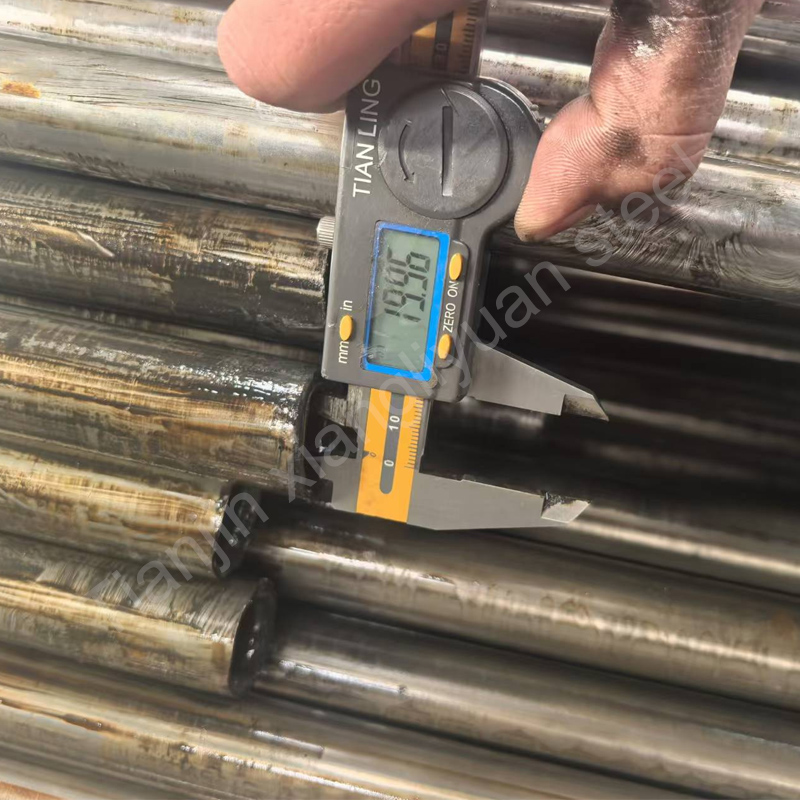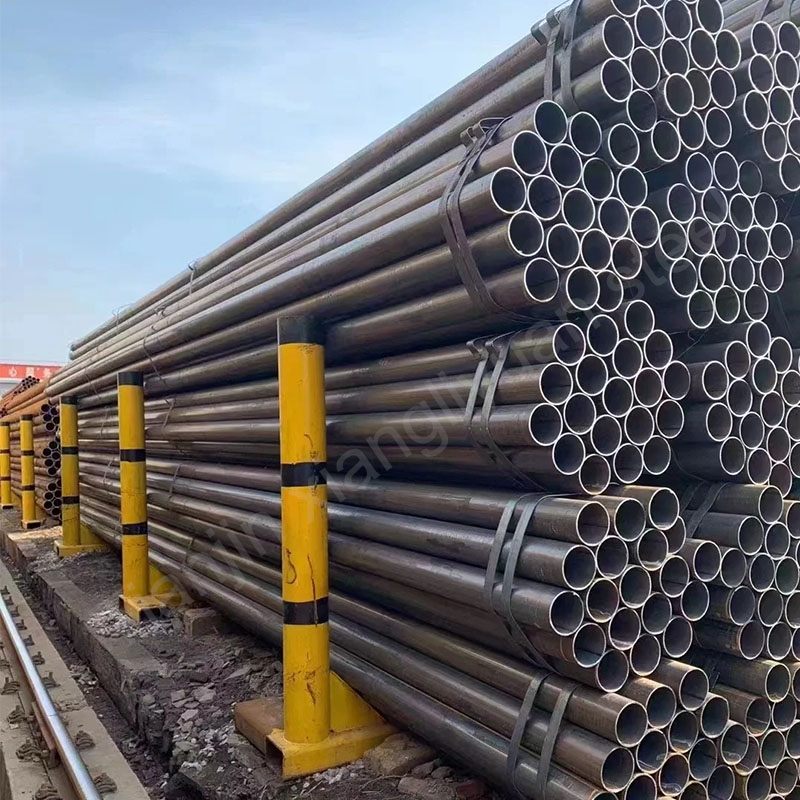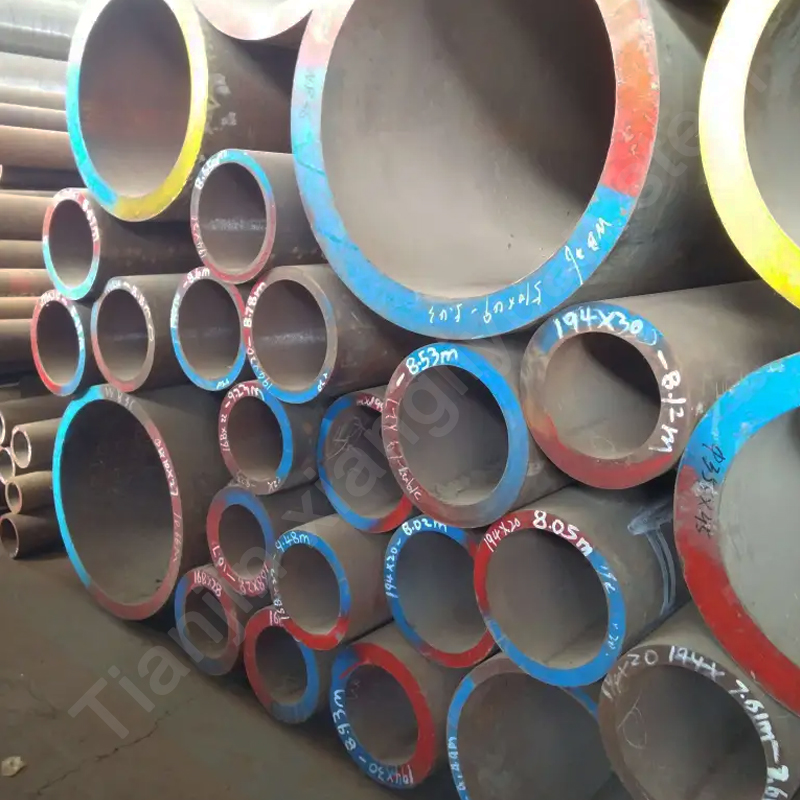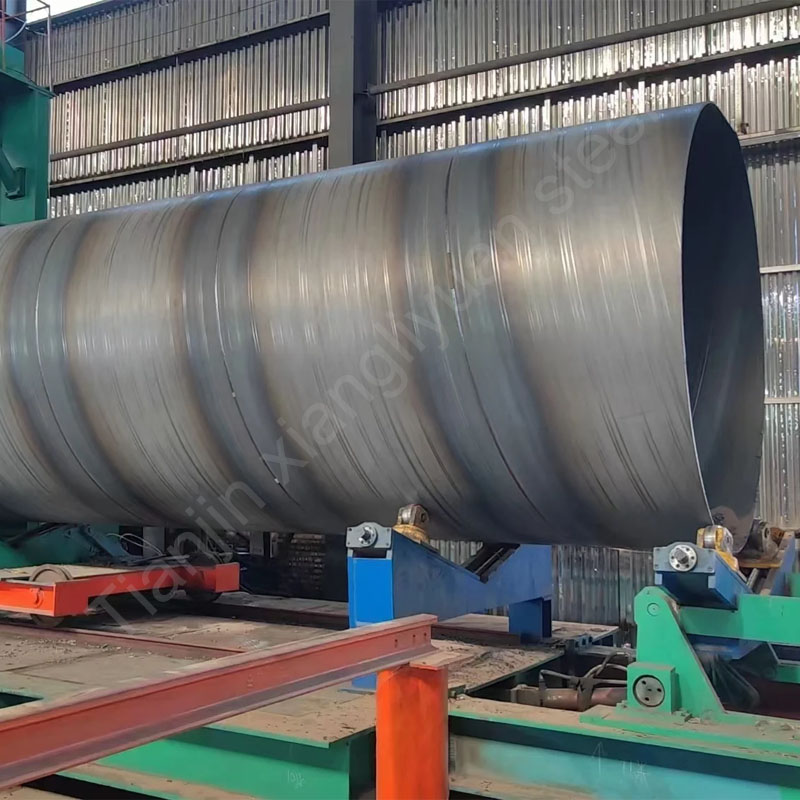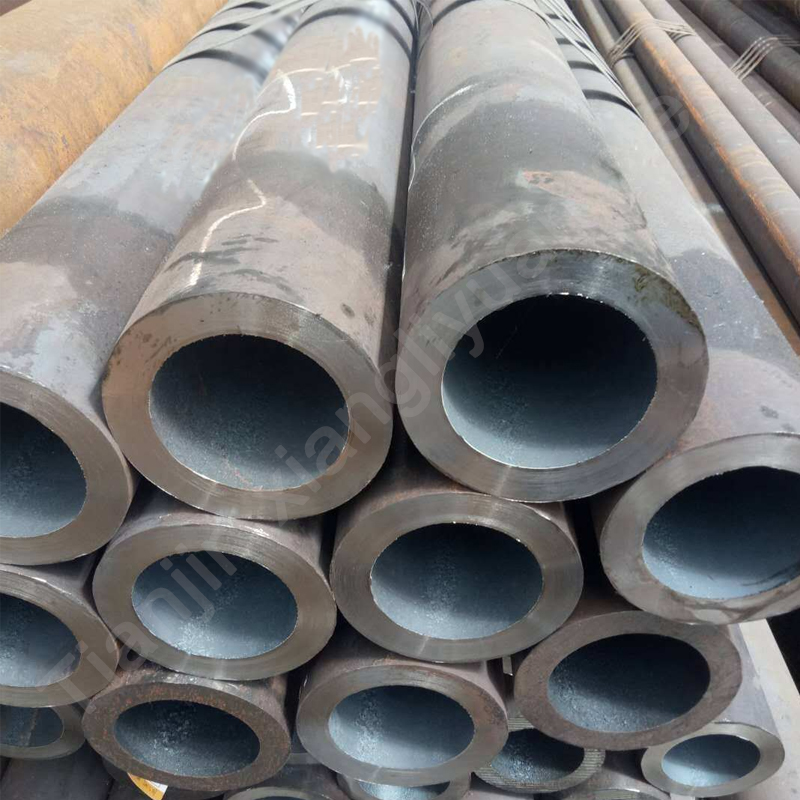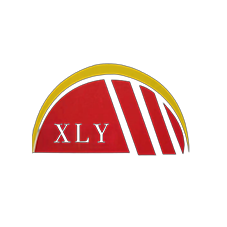Cold-rolled carbon steel pipe is a carbon steel pipe product produced by cold rolling process. It has high precision and surface quality and is suitable for precision machinery, automobile manufacturing, construction and furniture industries. Compared with hot-rolled steel pipe, cold-rolled steel pipe has higher dimensional accuracy and surface finish, which can meet the needs of some applications with high precision requirements.
1. Production process
The production process of cold-rolled carbon steel pipe usually includes the following steps:
Raw material preparation: First, hot-rolled steel coils or hot-rolled steel billets that meet the requirements are selected as raw materials, and the surface oxide scale is removed by pickling to ensure that the surface of the raw materials is smooth.
Cold rolling forming: The cold rolling process is to continuously roll steel at room temperature. During the rolling process, the steel is repeatedly deformed to achieve the required dimensional accuracy and surface quality.
Heat treatment: After cold rolling forming, the cold-rolled steel pipe needs to be heat treated to eliminate internal stress. Common heat treatment methods include annealing and normalizing, etc., the purpose is to improve the toughness and ductility of the steel.
Dimension correction: The heat-treated steel pipe is straightened on a certain straightening equipment to ensure that the straightness of the product meets the standard requirements.
Surface treatment: Some cold-rolled steel pipes may need to be galvanized, coated and other surface treatments to enhance their corrosion resistance and extend their service life.
Quality inspection and packaging: The finished products are strictly inspected for size, mechanical properties and surface quality to ensure that all indicators meet the standards before packaging.
2. Common steel grades
Common steel grades for cold-rolled carbon steel pipes include the following:
1. Chinese steel grades (national standard)
Q195: Low carbon steel, with good plasticity and ductility, suitable for cold rolling, usually used for light-loaded structural parts.
Q215: Slightly higher in strength than Q195, suitable for low-load structural parts and pipe fittings.
Q235: A more commonly used steel grade in low carbon steel, with good strength and toughness, widely used in general structural parts.
Q275: A relatively high-strength carbon structural steel, suitable for structural parts and mechanical accessories with high strength requirements.
20#: Low carbon steel, with a carbon content of about 0.2%, suitable for parts with requirements for weldability and cold working performance, such as machined parts.
45#: Medium carbon steel, with high strength and hardness, suitable for manufacturing mechanical parts with large forces.
2. American steel grade (ASTM/SAE standard)
1010: Low carbon steel, suitable for stamping parts and cold-formed parts.
1020: Low carbon steel, with good cold forming performance, widely used in light-load structural parts.
1045: Medium carbon steel, high strength and wear resistance, suitable for manufacturing mechanical parts and structural parts.
A36: Commonly used in structural steel, with good weldability and high strength.
3. European steel grade (EN standard)
S235JR: Low carbon steel, with good plasticity and toughness, used for general structural applications.
S275JR: Slightly higher strength than S235JR, suitable for structural parts with strength requirements.
S355JR: High-strength low-alloy structural steel, widely used in machinery manufacturing, building structures, etc.
C22, C45: Corresponding to the performance of 20# and 45# steel, used in the field of mechanical processing.
4. Japanese steel grades (JIS standard)
S10C, S20C: low carbon steel, excellent cold working performance, suitable for general mechanical structural parts.
S35C, S45C: medium carbon steel, high strength and hardness, widely used in mechanical parts with strength requirements.
STKM 11A, STKM 13A: mainly used for mechanical structures and building components, suitable for cold rolling and cold drawing.
5. International Organization for Standardization (ISO) steel grades
C15, C22, C35: similar to 20# and 45# in the national standard, used for mechanical structures and general-purpose parts.
III. Standards
The production and quality control of cold-rolled carbon steel pipes involve a variety of standards, including the following:
1. Chinese National Standard (GB)
GB/T 3639-2009: “Cold-drawn or cold-rolled precision seamless steel pipes”: precision seamless steel pipes suitable for cold-drawn or cold-rolled production, mainly used for mechanical structures and hydraulic equipment.
GB/T 13793-2008: “Straight seam electric welded steel pipe”: Applicable to straight seam electric welded steel pipe for general structure.
GB/T 8162-2018: “Seamless steel pipe for structure”: Seamless steel pipe for general structure and mechanical structure.
GB/T 8163-2018: “Seamless steel pipe for conveying fluid”: Seamless steel pipe for conveying fluids such as water, oil and natural gas.
2. American Standard (ASTM)
ASTM A513: Applicable to carbon steel and alloy steel electric welded steel pipes for mechanical structure produced by cold rolling or cold drawing.
ASTM A500: Applicable to cold-formed seamless and welded carbon steel pipes for structural purposes, commonly used in construction and general structural applications.
ASTM A179: Applicable to low carbon steel precision seamless steel pipes for heat exchangers and condensers.
3. European Standard (EN)
EN 10305-1: Applicable to precision cold-drawn seamless steel pipes, mainly used in hydraulic systems and automotive industries, etc.
EN 10305-2: Applicable to cold-rolled electric-welded precision steel tubes, commonly used in the automotive industry and other high-demand mechanical processing fields.
EN 10219: Applicable to cold-formed seamless and welded steel tubes for structural purposes.
4. Japanese Industrial Standard (JIS)
JIS G3445: “Carbon Steel Tubes for Mechanical Structures”: Applicable to structural steel tubes in the fields of machinery, automobiles, etc.
JIS G3472: “Electric-welded Steel Tubes for Automobile Structures”: Electric-welded steel tubes especially used for automobile structural parts.
JIS G3466: “Angle, Square and Rectangular Steel Tubes for General Structures”: Applicable to construction and other general structural purposes.
5. International Organization for Standardization (ISO)
ISO 10763: Mainly involves precision cold-rolled or cold-drawn seamless steel tubes, suitable for mechanical engineering, hydraulic and pneumatic systems, etc.
ISO 559: Applicable to general-purpose welded or seamless tubes, widely used in industry and construction.
4. Advantages of cold rolling
The cold rolling process has many advantages, making cold-rolled carbon steel pipes popular in applications:
High dimensional accuracy: The cold rolling process gradually rolls the steel at room temperature, which can achieve higher dimensional accuracy and smaller tolerance range, and is suitable for applications with strict dimensional requirements.
Good surface finish: The surface of the steel after cold rolling is smoother, which reduces the appearance of surface defects and improves the appearance quality of the steel pipe, which is very important for some decorative applications.
Excellent mechanical properties: The steel pipe after cold rolling has improved strength and hardness, and the toughness of the steel is also enhanced through heat treatment.
High material utilization rate: Due to the high processing accuracy of the cold rolling process, the cold rolling process reduces material waste, improves material utilization and production efficiency, and thus reduces production costs.
Suitable for precision machining: Cold-rolled carbon steel pipes are suitable for subsequent precision machining, such as turning, drilling, welding, etc., which is conducive to the manufacture of complex workpieces.
Cold-rolled carbon steel pipes have unique advantages in precision, surface quality and mechanical properties, and are widely used in machinery manufacturing, automotive industry, construction industry and other fields. Its production process strictly controls various indicators to ensure the high quality and applicability of the steel pipe.

